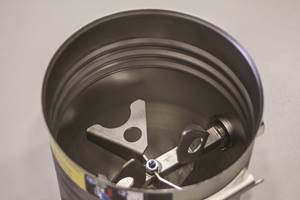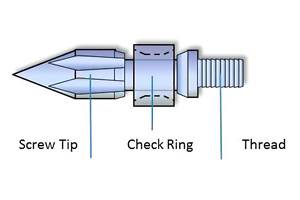Back to Its Roots in Film Extrusion
After drydocking its film extrusion ´óĎó´«Ă˝ in '99, converter goes back to its roots with upstart sister company.
Glen Galloway hadn’t extruded a film bubble in years. When he purchased Bema Inc., a flexographic printing, laminating, and converting firm based in Elmhurst, Ill., in August 1999, the company was struggling with old extrusion technology and battling to break even. So it quit making its own film for about the next decade.
Sam Shaw founded what was then called Bema Transparent Bag Co. in 1957 with one bottom-seal bag machine. Bema was the first company to make bags for big ´óĎó´«Ă˝ such as Mars Candy, Jewel-Osco, and Burny Brothers Bakery. Within two years, Bema had three bottom-seal bag machines, three side-weld bag machines, and one four-color printing press. Continued rapid expansion of the company demanded a larger, more modern facility. So in 1969, Bema moved from the South Side of Chicago to Elmhurst.
Five years later, Bema added blown film extrusion to the mix. Having all this technology integrated in one place spawned a host of R&D projects that sparked interest from much larger corporations. One of them, ITW Corp., was very interested in the stretch-film technology Bema was developing. ITW was so intrigued, in fact, that it bought the company in 1981.
After a five-year stint with ITW, Shaw bought the company back, then shifted its focus from R&D to become an “advanced job shop” production facility. A six-color printing press was added and Bema continued to expand its polyethylene film-processing capabilities. Over the next 13 years, Bema’s client list expanded to include many of America’s top brand owners, including Cloverleaf Bakery, Sherwin Williams, Hartz Mountain, and Block Company.
Shaw decided to sell the company in the summer of 1999 to Galloway, who had no previous experience in plastics. Soon thereafter, the company’s name was changed to . The main focus of the revitalized company was to grow through improved customer service and to continually refine its fully integrated manufacturing philosophy. To that end, the company had expanded its capabilities by adding new flexographic printing presses, pouch machines, bag-making machines, high-speed solventless lamination, and slitters.
Bema still had five monolayer film extrusion lines and for a while tried producing film to support its downstream ´óĎó´«Ă˝. “Being vertically integrated appeals to me,” says Galloway. “But when I bought the company we had old and tired vintage extrusion lines from the 1960s and ’70s. They simply could not push the new LDPEs we needed to run. On top of that, we had only a 35-ft tower and not enough ceiling height to go beyond that.”
So Bema exited PE film processing in the early 2000s and focused on printing, laminating, and converting. It purchased several high-tech printing presses, such as an eight-color Miraflex from Windmoeller & Hoelscher, Lincoln, R.I. “By 2007-2008, we had turned around the ´óĎó´«Ă˝. After adding two new presses, two new pouch machines, and two new slitters, we found ourselves looking for warehouse space, as we were quickly running out of it. We spotted a 75,000-ft² facility in St. Charles, Ill. and bought it. Then, we figured, why not manufacture there?”
Thus, sister company Elite Extrusion Technology (EET) was born. In 2011, commissioned W&H’s first Optimex line in the U.S, a three-layer line with a 75-in. layflat. Within a couple of months, a second Optimex line will be up and running, a three-layer system with an 85-in. layflat. By this time next year, Galloway expects to install a third blown-film line of either five or seven layers.
Says Galloway: “Bema was EET’s first customer and took up about half of our capacity. Applications ranged from food and pet-food packaging to film used for paint-roller covers. The rest of the film was sold to other converters.” Bema still had to go outside for specialty barrier films to accommodate the needs of printing and converting clients, but Galloway expects the new capacity will change that balance.
Related Content
Five Quick Steps Toward Better Blending
Rising costs of resins and additives, along with higher demands for quality and use of regrind, place a premium on proficient blending. Here are some steps to get you there.
Read MoreWhy Shoulder Bolts Are Too Important to Ignore (Part 1)
These humble but essential fasteners used in injection molds are known by various names and used for a number of purposes.
Read MoreGot Streaks or Black Specs? Here’s How to Find and Fix Them
Determining the source of streaking or contamination in your molded parts is a critical step in perfecting your purging procedures ultimately saving you time and money.
Read MoreHow to Configure Your Twin-Screw Barrel Layout
In twin-screw compounding, most engineers recognize the benefits of being able to configure screw elements. Here’s what you need to know about sequencing barrel sections.
Read MoreRead Next
Beyond Prototypes: 8 Ways the Plastics Industry Is Using 3D Printing
Plastics processors are finding applications for 3D printing around the plant and across the supply chain. Here are 8 examples to look for at NPE2024.
Read MoreLead the Conversation, Change the Conversation
Coverage of single-use plastics can be both misleading and demoralizing. Here are 10 tips for changing the perception of the plastics industry at your company and in your community.
Read More










